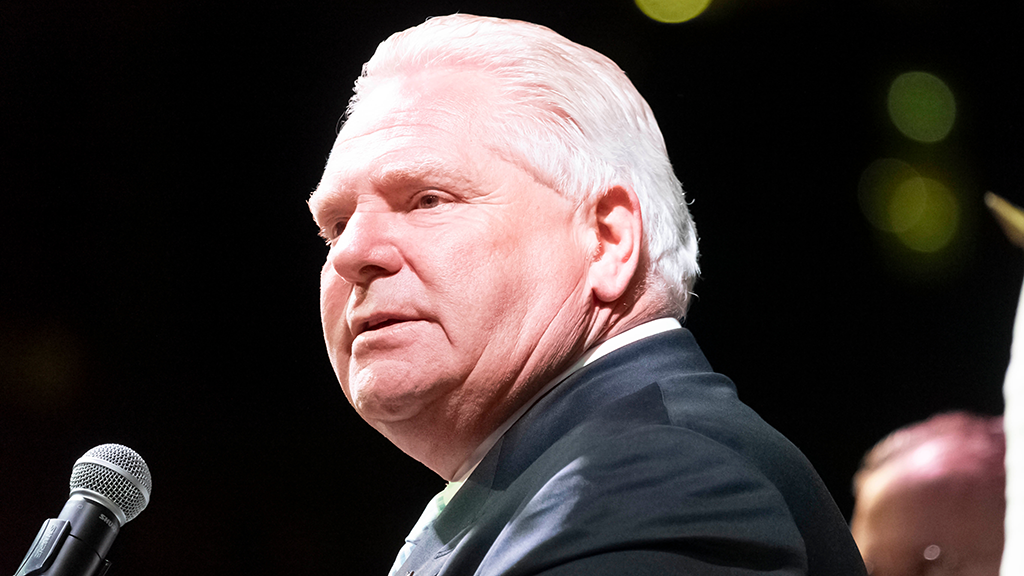TORONTO — Ontario passed divisive legislation Monday that will prevent municipalities from adding certain new bike lanes and remove others on three main Toronto roads – a sign, the opposition says, that the premier is too focused on fighting Toronto battles instead of provincial ones.
The fast-tracked bill requires municipalities to ask the province for permission to install bike lanes when they would remove a lane of vehicle traffic, and also goes one step further and removes sections of Bloor Street, Yonge Street and University Avenue bike lanes and restores them as lanes for vehicle traffic.
Premier Doug Ford has complained about some bike lanes creating gridlock, in particular on a stretch of Bloor Street West that is about a 10-minute drive from his home in Toronto’s west end.
The premier said Monday at an unrelated press conference that he had been receiving a lot of calls from people on both sides of the bike lane issue.
“It’s not anything against bike people,” he said. “Just go on the secondary roads.”
Transportation Minister Prabmeet Sarkaria said the province will establish a clear set of criteria for reviewing municipalities’ requests to install bike lanes, including effects on traffic volume, road safety, and emergency response times.
“If we determine that building those bike lanes would make congestion worse, they will not get built,” he said.
As well, the province will review bike lane projects that have been started in the past five years, Sarkaria said.
“It will be a data-driven process,” he said to peals of laughter from the opposition benches. Critics suggest the move to remove three Toronto bike lanes is based on little more than anecdotal evidence and complaints from some local business owners.
NDP Leader Marit Stiles said the premier should be focused on provincial priorities such as finding more people a family doctor, clamping down on rent increases, and ending violence against women.
“We have a premier who is so focused on his vanity projects and fighting battles that he lost on Toronto city council, instead of actually focusing on the priorities of Ontarians,” she said.
Amendments that the government added last week include indemnity clauses, such as prohibiting lawsuits as a direct or indirect result of actions taken to remove bike lanes.
Stiles said she believes the immunity clauses were thrown into the legislation after the government heard from members of the public who said that people will be killed and injured as a result of removing protected bike lanes.
“Obviously it’s an indication that they acknowledge that, and they’re protecting their own behinds rather than actually addressing the fact that people are going to get hurt,” she said.
Liberal house leader John Fraser said the government protecting itself from the consequences of its decision making indicates it is not a good decision.
“They weren’t fully considering what they were doing,” he said. “They’re in such a hurry to do it, they’re saying, ‘Hey, let’s protect ourselves from any future liability, because we made this really quick, rash decision, because we want to get elected.”
Green Party Leader Mike Schreiner said people in the rest of the province do not care about bike lanes in downtown Toronto.
Sarkaria has said the province will foot the bill for removal costs, but he doesn’t believe the city’s estimate of $48 million, as it is double the price tag of the initial installation.
He suggested, however, that the province did not come up with its own estimate before proposing to remove the existing bike lanes.
The Association of Municipalities of Ontario has slammed the province for the legislation, calling it a “significant overreach” and an unwanted incursion into municipal jurisdiction.
In an overall bid to ease gridlock, the bill also facilitates construction 24 hours a day, accelerates property acquisitions and exempts the planned Highway 413 project from the provincial Environmental Assessment Act.
©2024 The Canadian Press











Recent Comments
comments for this post are closed